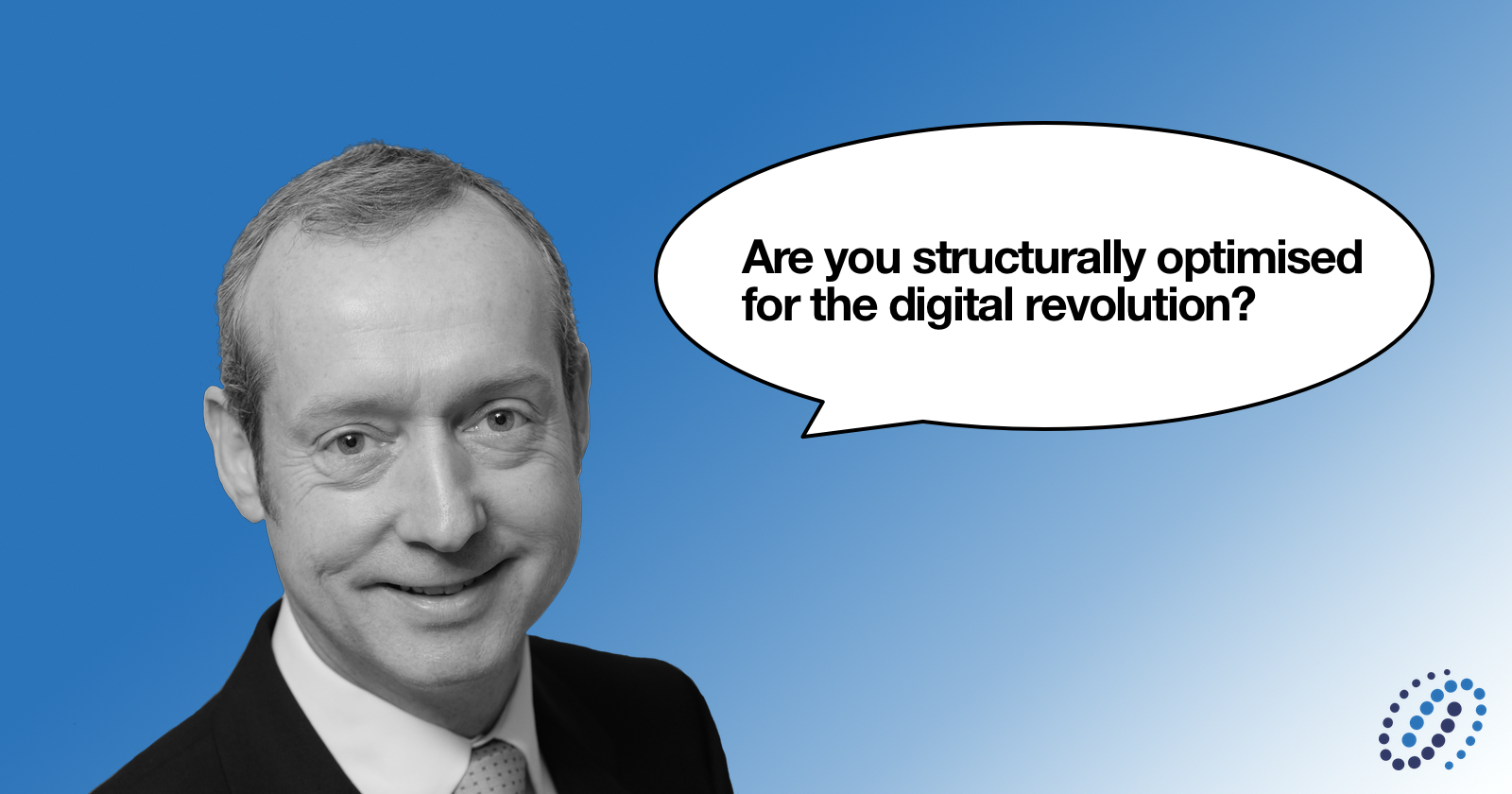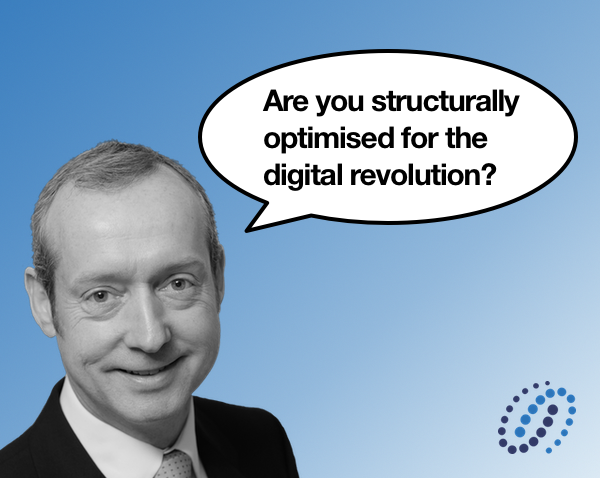In the last two blogs, I’ve explained why communications and reporting is so important for your business and discussed some of the elements that are required to ensure your report production process is fit for purpose. You can read those blog posts here and here. In this post, I’m going to continue by considering some of the forces that are affecting organisational design and how in the digital revolution, these can be optimised to increase success.

Across financial services, and many other industries, digital transformation is in focus. Firms are thinking, what tech should we be using? How can we best leverage data, AI, and machine learning to improve efficiency and increase revenue? What impact will digital disruptors have on our customer-base and profits? The answers are linked to organisational structure. Let’s explore the reasons why.
We see three primary forces that are driving changes in organisational structure across financial services. The workforce is changing, technology continues to advance, and competitive advantage is becoming harder to find.
Force 1 – Some firms haven’t got and can’t find the right workforce to support their digital transformation.
Whilst our conversations with industry players often include digital transformation, they often lack due consideration of the future workforce. The people that need to support the change often lag behind in transformation strategies and it remains unclear as to whether some firms can even attract or retain the talent required to support operating models in and after the digital revolution.
Companies that seek to build primarily digital operating models will need to develop and hire different skills than they’re used to whilst continuing to support their more traditional processes and workforce and we think this presents a problem that’s not getting enough attention. Absent talent strategies and those that exist but are undifferentiated don’t meet the needs of both types of workforce and worse still, when there’s misalignment with business strategy, growth is truly being stifled.
Not only that. Long-established firms have another problem. Digital born companies – those launched in the cloud, social, analytics and mobile era – are usually much more adept at handling external partnerships, satellite structures, and outsourced processes, and that means required talent is sourced more easily, compounding the competitive problem for the traditional firm and removing premium resource from an already shallow pool.
Force 2 – The ongoing cost and change associated with technology can adversely affect client service.
Technology is great but it moves quickly. We now take for granted inventions that seemed implausible only a decade ago. Technology will continue to change the way we communicate, organise, and socialise. The global pace of technological advancement forces investment firms to keep up to ensure that they’re delivering a service that’s expected by both consumers and B2B relationships and that’s difficult, costly, and fraught with complication.
There’s an evolutionary balance to be found. The firm’s I.T. cannot standstill or it quickly becomes “legacy” or even obsolete. This means regular (often costly) upgrades, constant change, administrative burden, and a corresponding drain on human and financial resource.
As you’ll likely know, this means the I.T. function is a dominant force in the organisation and is a significant portion of the budgeted spend. Of course, it’s difficult to argue against that – running costs would undoubtedly be a lot higher if people replaced machines – but is all that cost really necessary? What impact does it have on client service? At least, how much more time and money could be spent on client relationships if the I.T. landscape was optimised for true efficiency?
That’s a calculation that’s probably impossible to make. Even if you did include every related I.T. cost, including people, contracts, maintenance, training, etc. you would struggle to reallocate the difference towards client relationships. Furthermore, when you start to consider the positive affect I.T. has on client relationships already, risk and opportunity costs, probability, and confidence levels, the concept becomes rather woolly. Nevertheless, it’s clear that I.T. has a cost associated with it that needs to be reduced to allow reallocation of expenditure to where it can be better utilised.
Force 3 – Competitive Advantage will only be found in client service.
Through digitisation of operations, running costs are reducing and levelling. Publicly available information and automated trading is reducing margin, and the battle for alpha is becoming tougher as digital disruptors start to gain market share. In this environment, the last remaining battleground is client service and that’s where you’ll find competitive advantage.
The problem here lies in the nature of that service. Increasingly, clients want bespoke service tailored to their specific needs and requirements but in some cases, those needs aren’t actually known, realised or admitted. Firms needs to anticipate and act on those needs in order to delight their clients and to do so requires a fundamental shift in focus and organisational design.
So, client service is fast becoming the only remaining source of competitive advantage, but delivery is possibility hindered by I.T. Improving it means moving to a data-led client focussed business and this requires a different type of workforce, but those people are hard to find. What’s the answer? How can this be achieved when your operating model was devised before this concept was realised and based upon tech that has long been superseded?
It requires a re-design of the organisation, adopting ‘cloud’ and leveraging partnerships and external expertise to bolster and support your own offering. Agility is key and agility cannot be achieved without flexibility. By doing so, you can reduce the cost and effort associated with I.T. which allows you to focus on your key differentiator, client service.
Reporting as a Service is cloud-based and provides a complete, scalable, flexible, and future proof client and fund reporting solution. It allows investment firms to provide reporting of the highest quality to their clients without the costs and complications that are associated with on-premise legacy software and IT support teams.
To find out more about Reporting as a Service and how it benefits firms like yours, visit our website at www.opus-nebula.com and contact us personally or via [email protected] to arrange a meeting and see a live demonstration of the system.

